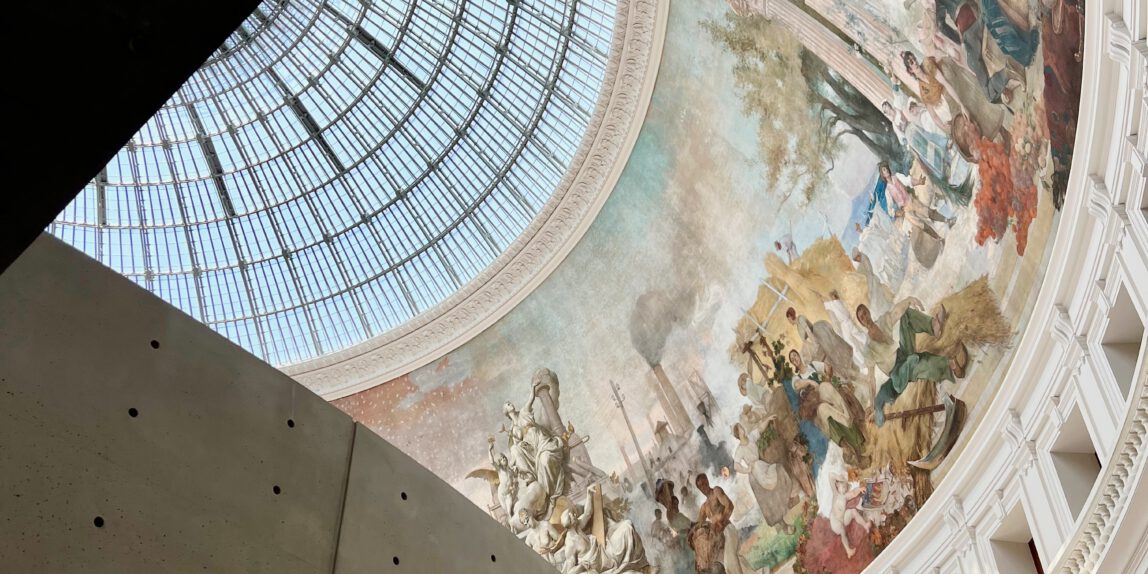
Day 1: Check into the Hotel Molitor and explore the hotel’s facilities, including the rooftop terrace and swimming pool. Visit the Foundation Louis Vuitton, located in the Bois de Boulogne park. The museum features contemporary art exhibits and has a stunning architecture designed by Frank Gehry. End the day with dinner on the rooftop terrace of Hotel Molitor.
Day 2: Take a walk through the 16th arrondissement to the Galerie54. The gallery showcases the work of important 20th century designers and architects. Stop for lunch at a local cafe or bistro in the area. In the afternoon, head back to the Hotel Molitor to relax and enjoy the facilities. For dinner, head to the Cour Jardin du Plaza Athenee, a luxurious restaurant located in the heart of the Golden Triangle.
Day 3: Start the day by visiting the Petit Palais, a beautiful museum located in the 8th arrondissement. The museum houses an extensive collection of art and artifacts from antiquity to the early 20th century. Take a stroll through the Golden Triangle, one of Paris‘ most affluent neighborhoods. Enjoy the stunning architecture and high-end shopping. For dinner, try a local restaurant or bistro in the area.
Day 4: Go shopping at Samaritaine, a historic department store located in the heart of Paris. The store features luxury fashion, beauty, and home goods. In the afternoon, visit the Pinault Collection, a contemporary art museum located in the Bourse de Commerce. End the day with a stroll along the Coulee verte Renee Dumont, a picturesque park built on an old railway viaduct and a stroll along the Passage du Chantier (Bastille District) which has been renovated and transformed into a charming and unique shopping destination.
Day 5: Enjoy a final breakfast at the Hotel Molitor before checking out and departing for your next destination.
Day 1
Hotel Molitor is a historic hotel located in the 16th arrondissement of Paris, known for its famous swimming pools.
The Molitor was opened in 1929 as one of the most luxurious and modern swimming pools in Paris, featuring two pools, one indoor and one outdoor, and a Turkish bath. The pools were designed by architect Lucien Pollet and artist Robert Poughéon, who created a unique Art Deco aesthetic that was both stylish and functional. The pool quickly became a popular destination for Parisians and visitors alike, and it hosted many high-profile events, including fashion shows and water ballet performances.
In 2014, the Molitor pool was renovated and transformed into a luxury hotel, preserving the original Art Deco design of the pool. The hotel now has 124 rooms, including 20 suites, and its rooftop restaurant offers stunning panoramic views of Paris.


Today, the Molitor remains an iconic symbol of Art Deco architecture and a testament to the rich history of Parisian swimming culture. The hotel’s pools continue to be a popular destination for both guests and visitors, who can enjoy a swim in the same waters that were once frequented by Parisian high society.
Dining at the Rooftop Restaurant of the Hotel Molitor in Paris is a special experience:
The rooftop restaurant offers stunning panoramic views of Paris, providing a unique and unforgettable dining experience. From the restaurant, you can take in the breathtaking views of Paris’s iconic landmarks, such as the Eiffel Tower, while enjoying your meal.
The food at the rooftop restaurant is exceptional, featuring creative and flavorful dishes that showcase the best of French cuisine. The menu is inspired by the seasonal ingredients and features a mix of classic French dishes with modern twists.
Dining at the rooftop restaurant of the Hotel Molitor in Paris is a truly special experience, offering stunning views, exceptional food and wine, an elegant ambiance, and exceptional service. It is a perfect destination for a romantic dinner or special occasion, and a must-visit for any foodie or lover of fine dining.
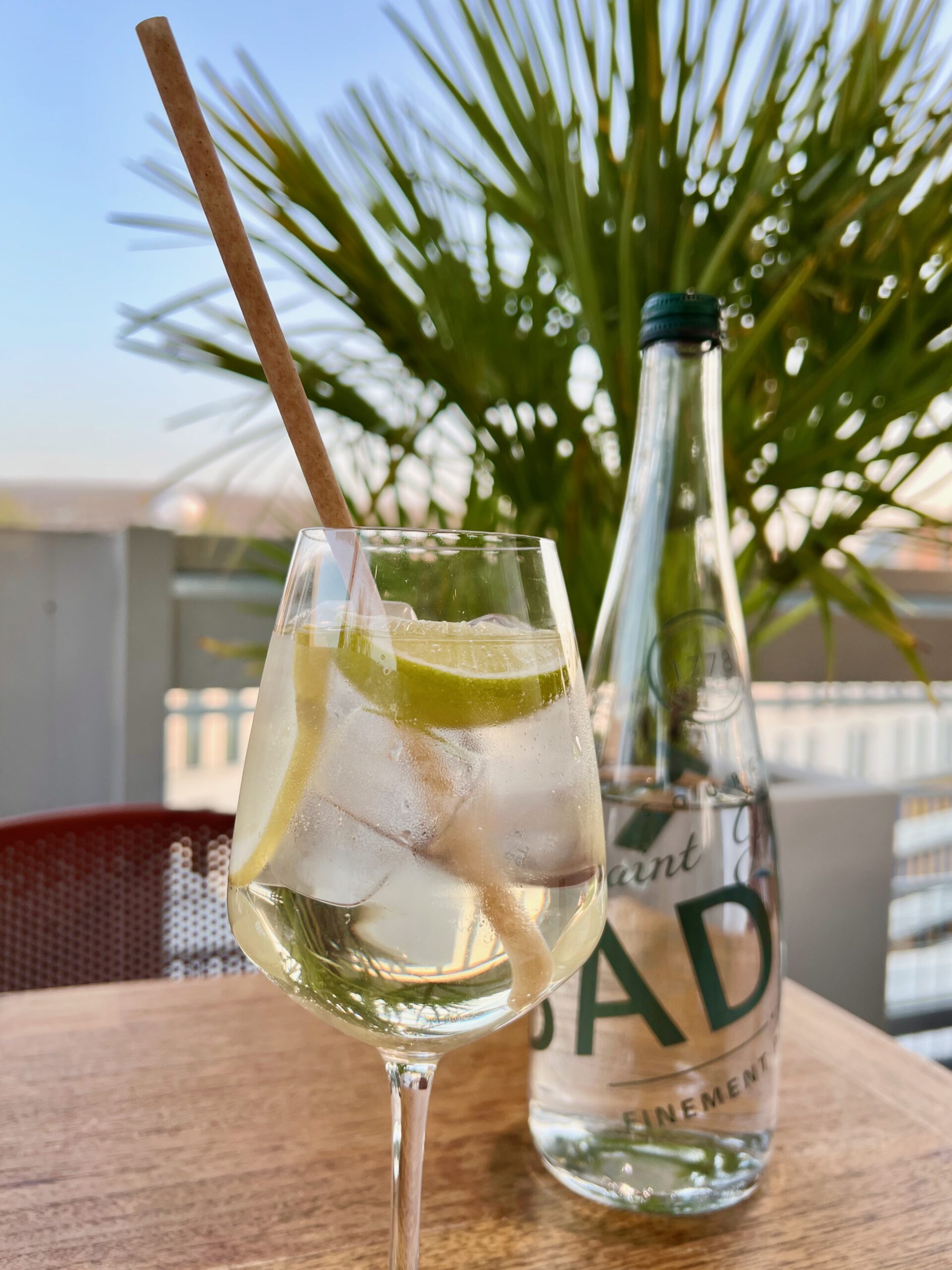
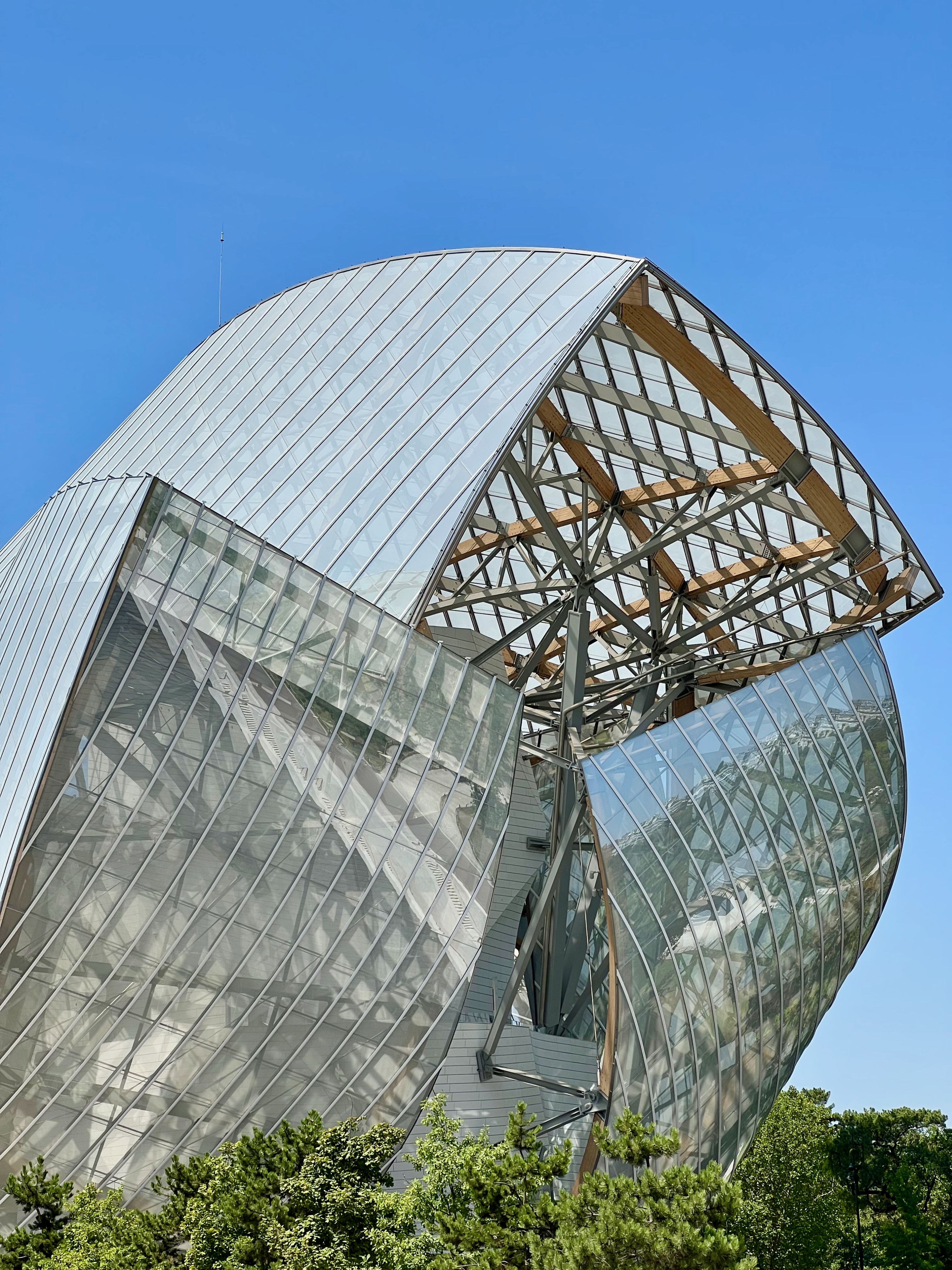
The Fondation Louis Vuitton is a contemporary art museum located in the Bois de Boulogne park on the western edge of Paris – a sprawling green space that was once a hunting ground for French royalty. The park is now a popular destination for Parisians and tourists alike, and offers a range of recreational activities, including boating, cycling, and picnicking. The museum’s position on the edge of the park provides stunning views of both the park and the city skyline, and adds to the sense of tranquility and escape that the museum aims to provide.
The museum was designed by the renowned architect Frank Gehry and opened in 2014. The building itself is a stunning work of art, featuring a series of glass sails that rise up above a concrete base. The sails are made of a special type of glass that reflects the light and changes color throughout the day, giving the building a shimmering, ethereal quality.
Frank Gehry is a Canadian-American architect who is known for his innovative and often whimsical designs. His work is characterized by the use of unusual materials, unconventional forms, and a sense of movement and flow. Gehry is considered one of the most influential architects of the 20th and 21st centuries and has won numerous awards for his work, including the Pritzker Prize, the most prestigious award in architecture.
Some of Gehry’s most famous works include the Guggenheim Museum in Bilbao, Spain, which is widely regarded as a masterpiece of contemporary architecture. The building features a curvaceous titanium exterior that reflects the surrounding landscape and changes color throughout the day. The interior is filled with light and space, providing a stunning backdrop for the museum’s collection of modern and contemporary art.
Another notable work by Gehry is the Walt Disney Concert Hall in Los Angeles, California. The concert hall is designed to resemble a ship or a sailing vessel, with a gleaming stainless steel exterior that reflects the light and creates a dynamic sense of movement. The interior of the concert hall is designed to provide exceptional acoustics, with a series of curved walls and ceilings that help to distribute sound evenly throughout the space.
Gehry’s other notable works include the EMP Museum in Seattle, Washington, which is dedicated to popular culture and music, and the Biomuseo in Panama City, Panama, which is dedicated to the study of biodiversity and ecology.
Gehry’s work is often seen as pushing the boundaries of architecture, challenging conventional notions of form and function. His designs are characterized by a sense of playfulness and experimentation, and often incorporate elements of nature and the surrounding environment.
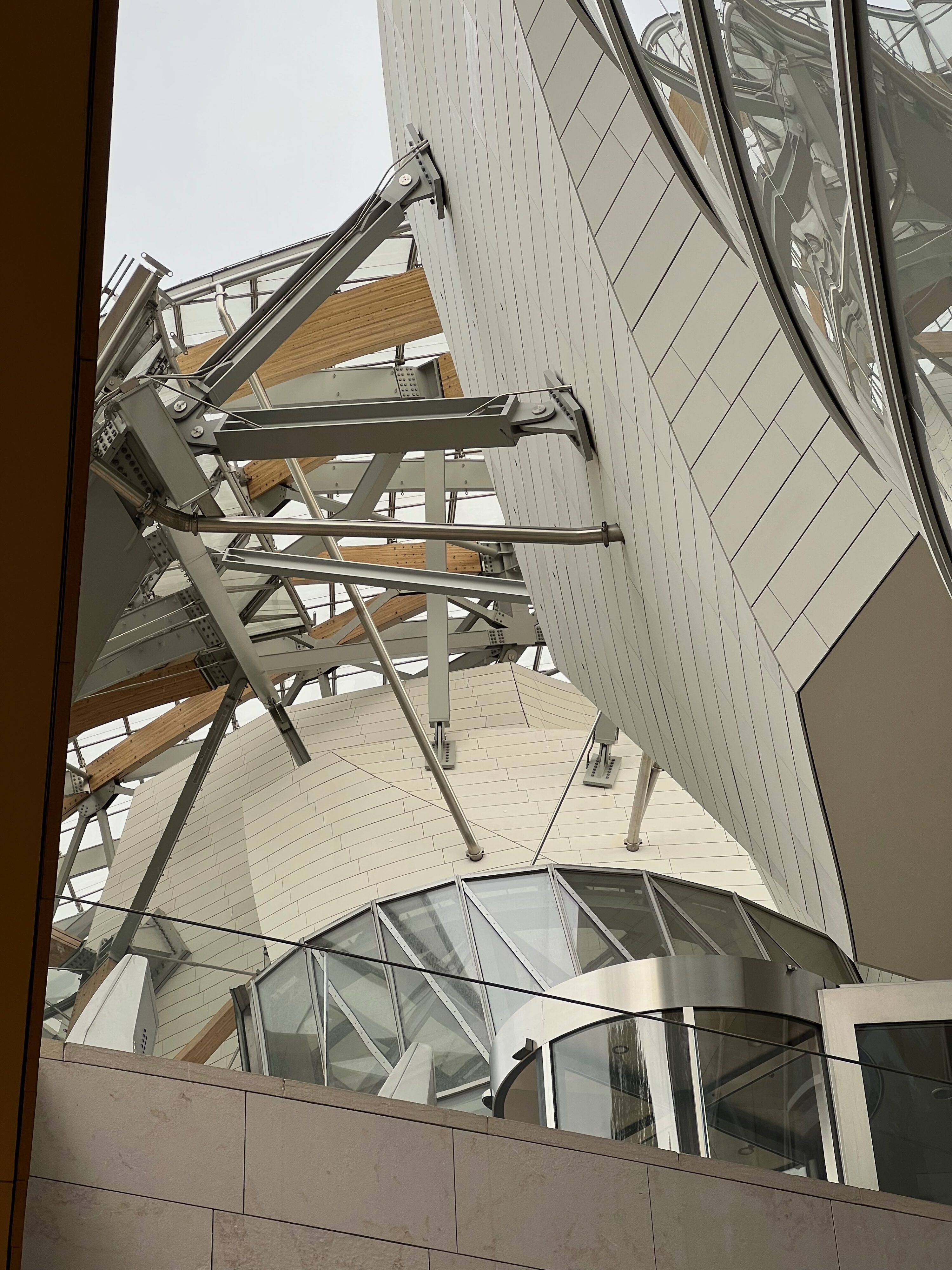

The museum is dedicated to contemporary art and hosts a range of exhibitions throughout the year, showcasing works by both established and emerging artists. The collection includes works in a variety of mediums, including painting, sculpture, photography, and video art. The museum also hosts concerts, performances, and other cultural events.
One of the most notable exhibitions held at the Fondation Louis Vuitton was a retrospective of the work of the artist Simon Hantaï (1922-2008) in collaboration with the Hantaï family, curated by Anne Baldassari, including more than 130 of Simon Hantaï’s works, many of which have never before been shown, and the majority of which are large format works from 1957 to 2000.
Simon Hantaï was a Hungarian-born French painter who was active from the 1950s until his death in 2008. He was associated with the art movement called the „Supports/Surfaces“ group, which was active in France in the 1960s and 1970s. Hantaï is known for his exploration of the technique of „pliage,“ or folding, in his paintings.
In the 1960s, Hantaï began experimenting with folding large canvases before painting on them. He would then unfold the canvases, revealing a pattern of color and texture that was created by the paint seeping through the creases created by the folds. This technique resulted in a unique and unpredictable composition in each painting. Hantaï continued to develop this approach throughout his career, using different materials and methods to fold and create texture in his canvases.
Hantaï’s work is characterized by its vibrant color, organic shapes, and complex patterns. He often used bold, bright colors, and his compositions are often asymmetrical and dynamic. His work has been exhibited in major museums and galleries around the world, and he is considered one of the most important painters of the post-war period.
„Fugues in Color“ is another remarkable installation exhibited at the Fondation Louis Vuitton – an installation by Katharina Grosse, a German artist known for her large-scale installations and paintings that often incorporate bold, vivid colors.
The installation is a large-scale immersive environment filling a large hall within the museum. Grosse used spray paint to create a series of abstract, colorful shapes that cover the walls, ceiling, and floor of the space. Visitors are invited to walk through the installation and experience the work from different perspectives, becoming fully immersed in the vibrant and dynamic environment.
Like many of Grosse’s works, „Fugues in Color“ blurs the line between painting and installation art. The work is characterized by its use of bold, bright colors and its sense of movement and flow. The abstract shapes that make up the installation are meant to suggest natural forms, such as waves or plant growth, but are ultimately open to interpretation.
„Fugues in Color“ is a critically acclaimed exhibition that is praised for its boldness and its ability to create a fully immersive environment. The work is seen as a continuation of Grosse’s interest in exploring the boundaries of painting and installation art, and her ability to create works that challenge and engage viewers.
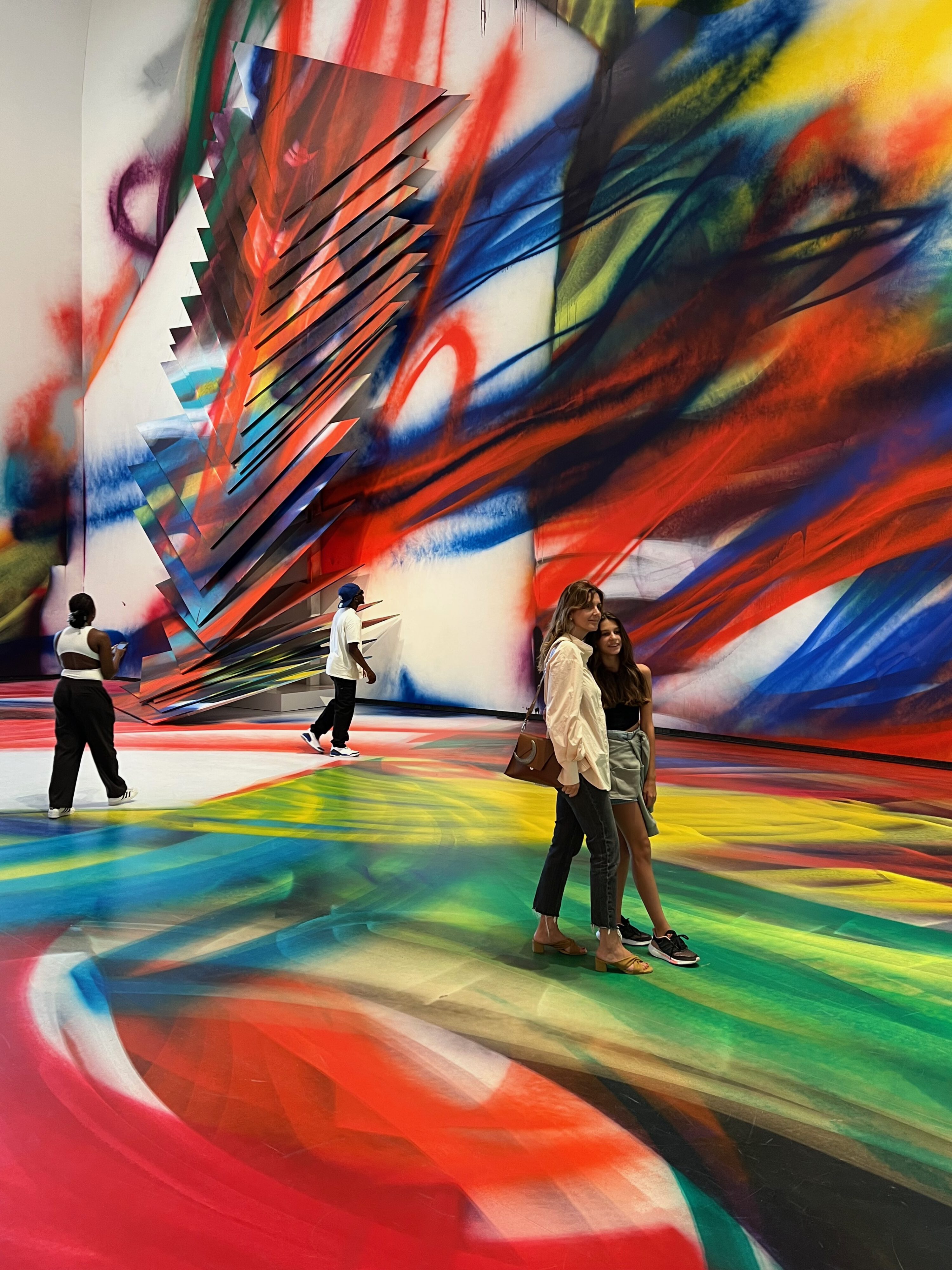
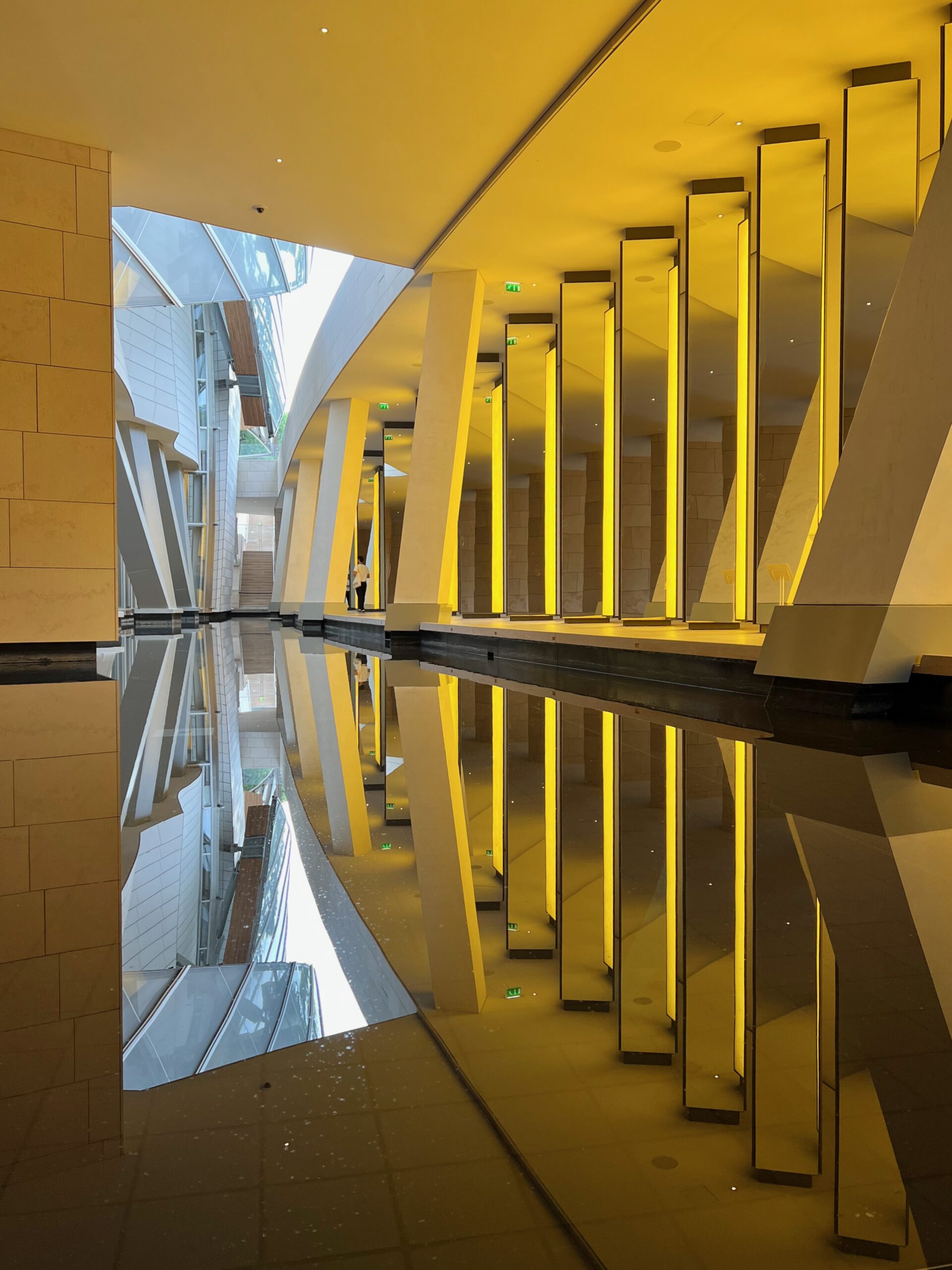
„Inside the Horizon“ is an immersive installation created by Danish-Icelandic artist Olafur Eliasson. The installation was first exhibited at the Fondation Louis Vuitton in Paris in 2014 and has since been shown at various other venues around the world.
The installation consists of a large, circular room with walls that are covered in reflective panels. At the center of the room is a circular platform, which visitors can stand on to experience the installation. Above the platform is a circular opening in the ceiling, which allows natural light to filter down into the space.
As visitors stand on the platform and look up, they are surrounded by a seemingly infinite horizon of sky and clouds. The reflective walls of the room create a dizzying, kaleidoscopic effect, as the images of the sky and clouds are reflected and distorted in every direction.
The installation is designed to create a sense of awe and wonder, as visitors are transported to a seemingly limitless space. Eliasson has described the installation as an exploration of „perception, space, and movement,“ and aims to encourage visitors to think about their relationship to the natural world.
„Inside the Horizon“ is just one of many works by Olafur Eliasson that explore the intersection of art, science, and nature. His installations often use light, water, and other natural elements to create immersive experiences that challenge viewers to see the world in new ways.
Olafur Eliasson is a Danish-Icelandic artist who is known for his large-scale installations and sculptures that often incorporate natural elements, such as light, water, and air. His work explores themes of perception, movement, and the relationship between the individual and the environment.
One of Eliasson’s most famous works is „The Weather Project,“ which was exhibited at the Tate Modern in London in 2003. The installation consisted of a large, semi-circular sun made of hundreds of yellow lamps, surrounded by mist and mirrors that created the illusion of a vast, empty space. The work was designed to evoke the sensation of being inside a sunset or sunrise, and was praised for its ability to create a meditative and awe-inspiring atmosphere.
Eliasson’s work often incorporates elements of science and technology, and he is known for his use of experimental materials and techniques. His installations are often site-specific, designed to interact with the architecture and environment of a particular space. He has also created several public art projects, including „Waterfalls,“ which consisted of a series of artificial waterfalls installed along the East River in New York City in 2008.
Eliasson has received numerous awards and honors for his work, including the Prince Eugen Medal in 2000 and the Joan Miró Prize in 2007. His work has been exhibited in museums and galleries around the world, and he is widely regarded as one of the most important contemporary artists working today.
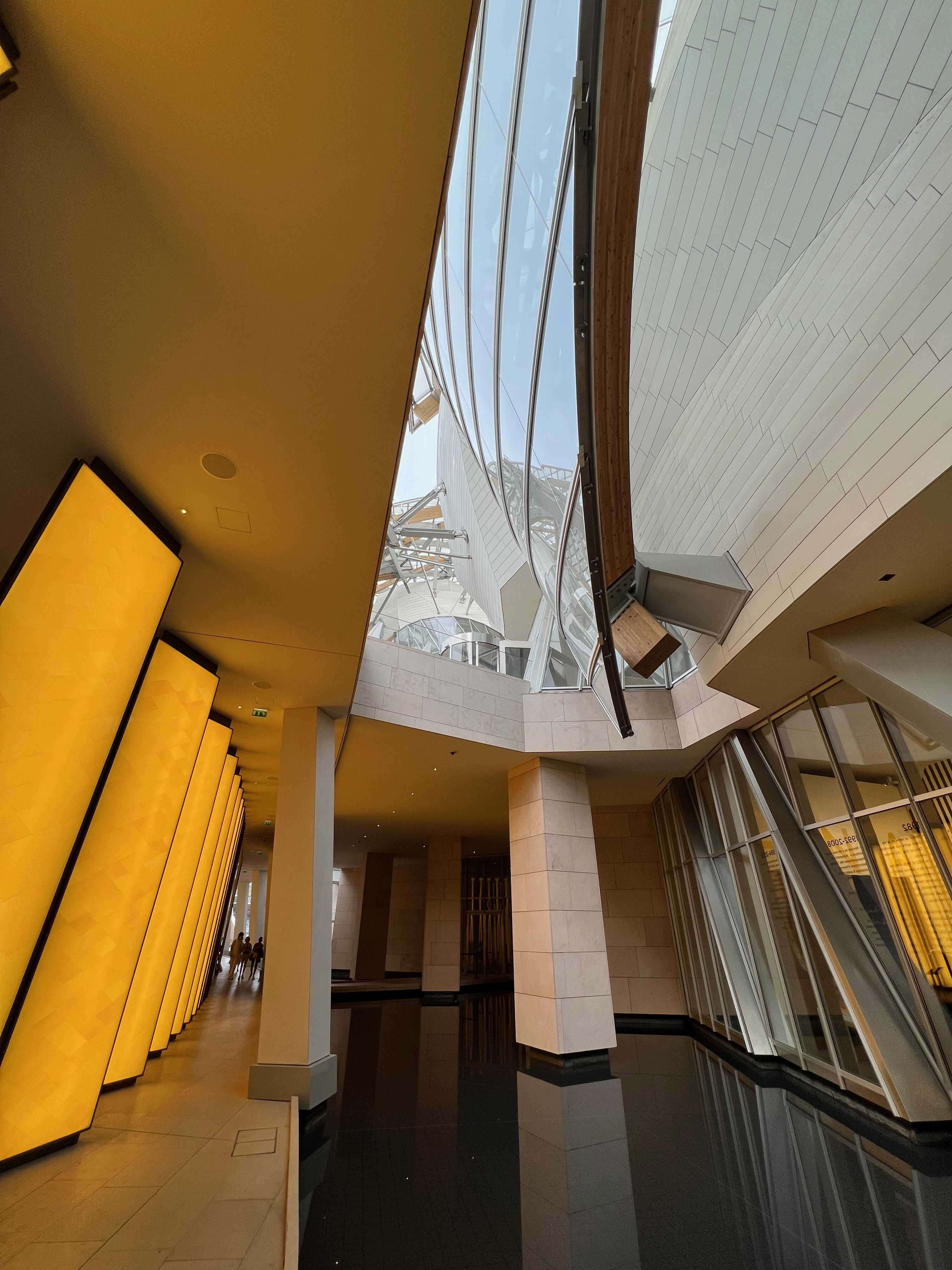
Day 2
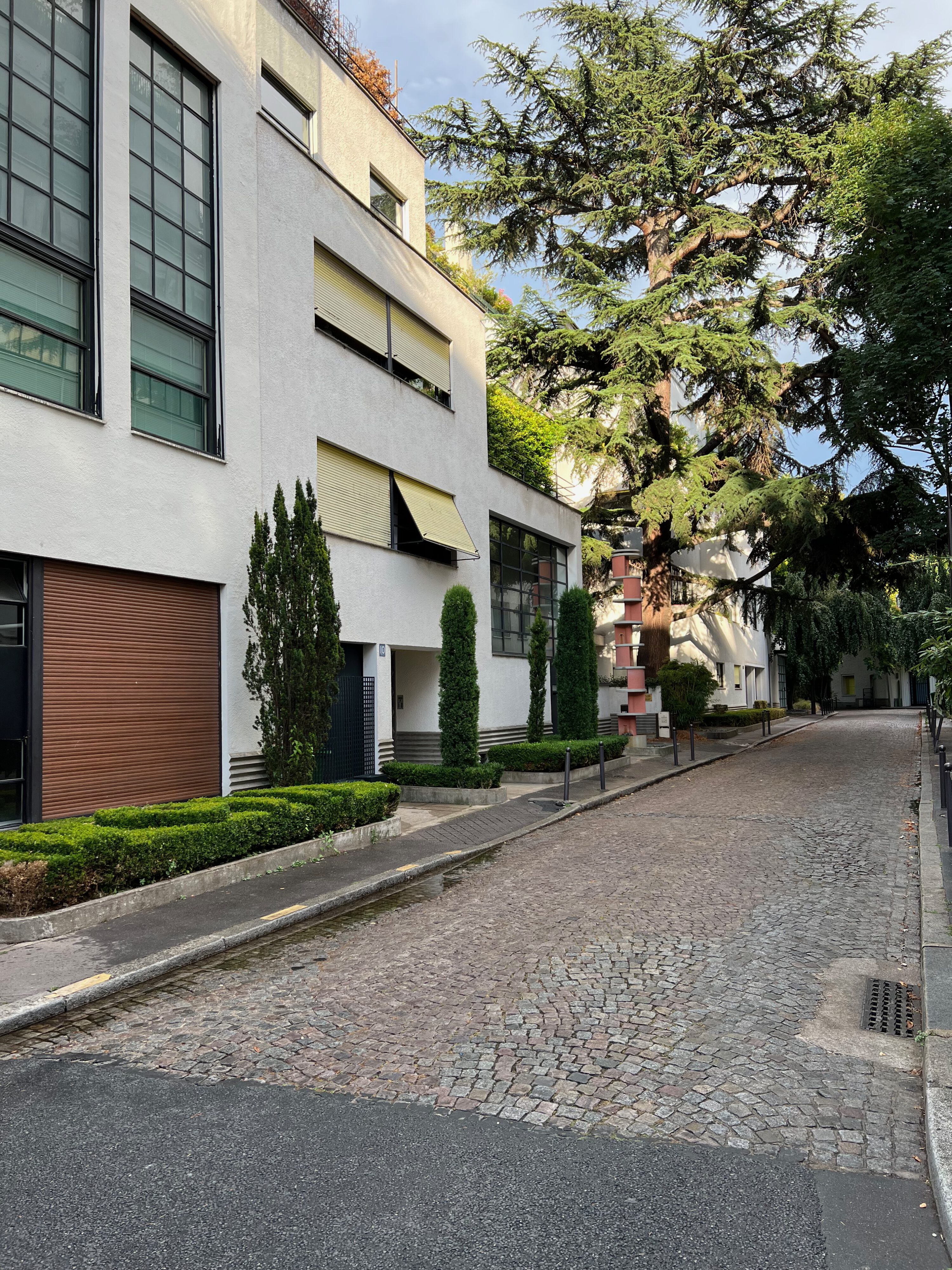
Rue Mallet Stevens is a street located in the 16th arrondissement of Paris, France. It is named after the French architect Robert Mallet-Stevens, who designed a number of buildings on the street and in the surrounding area.
Mallet-Stevens was an influential figure in the modernist movement in architecture during the 1920s and 1930s. He was known for his clean, geometric designs and his use of new materials such as concrete and steel. Many of the buildings he designed on rue Mallet Stevens and elsewhere were inspired by the principles of the International Style, which emphasized functionality, simplicity, and the use of industrial materials.
Many of the buildings on rue Mallet Stevens and in the surrounding area have been designated as historic landmarks, and the street is now considered to be one of the best examples of modernist architecture in Paris.
Some of the notable buildings on rue Mallet Stevens include:
- The Villa Cavrois, a large private residence that was built between 1929 and 1932. The villa is considered to be one of Mallet-Stevens‘ masterpieces and is now a national monument.
- The Hôtel Martel de Janville, a private mansion that was built in 1926. The building features a sleek, modernist design and is considered to be one of Mallet-Stevens‘ most important works.
- The Hôtel Mallet-Stevens, a private residence that was built in 1927. The building is notable for its use of concrete and its striking angular design.
- The Hôtel Martel is a private mansion owned by Eric Touchaleaume – a French art dealer and gallerist – and home to his Galerie 54. The Hôtel Martel is considered to be one of Mallet-Stevens‘ most important works and is an excellent example of the modernist architecture that was popular during the 1920s and 1930s. The building features a sleek, streamlined design with clean lines and an emphasis on geometric shapes. Hôtel Martel is not open to the public. However, the building’s striking architecture can still be appreciated from the street, and it is considered to be one of the highlights of rue Mallet Stevens.
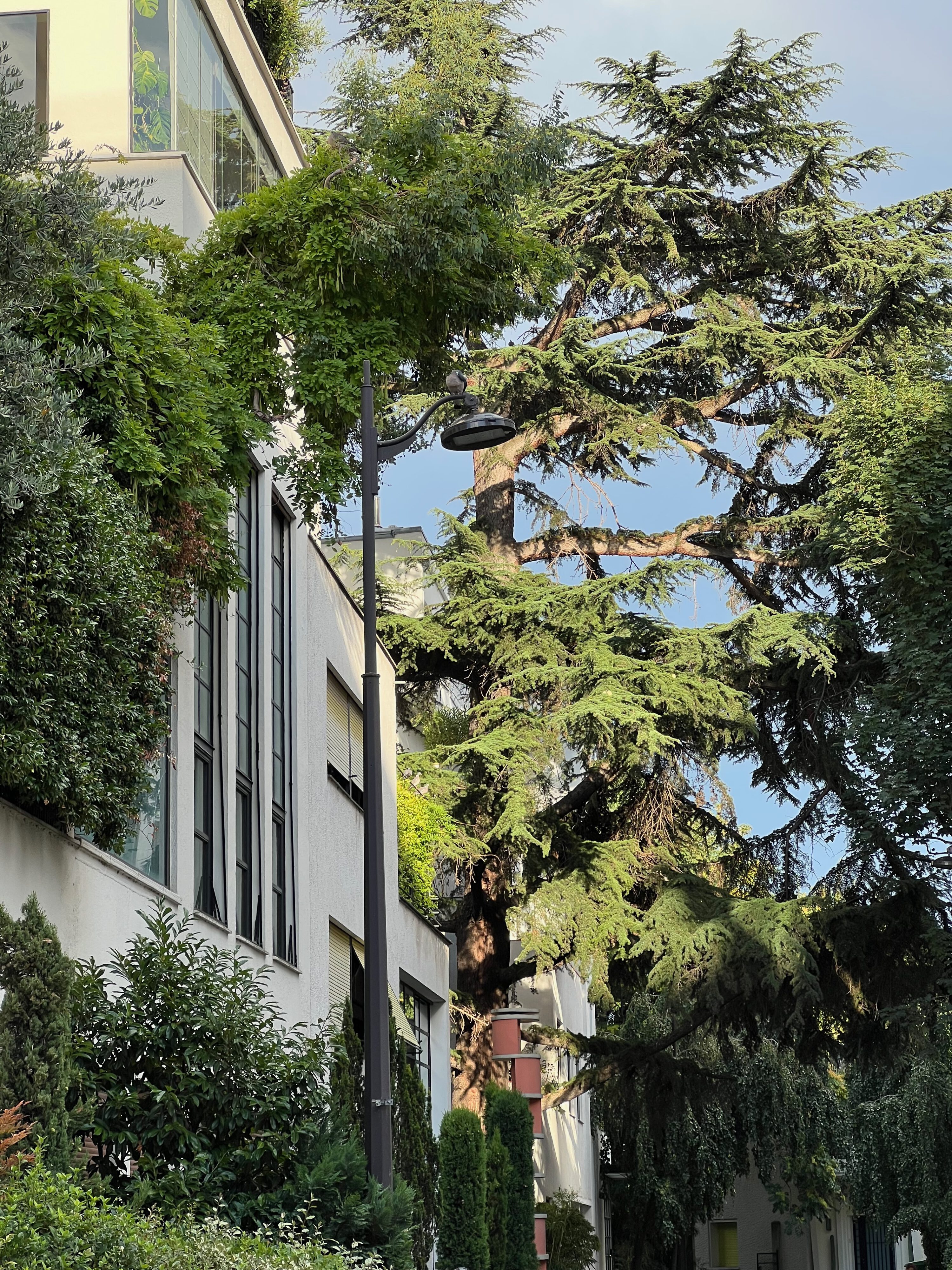
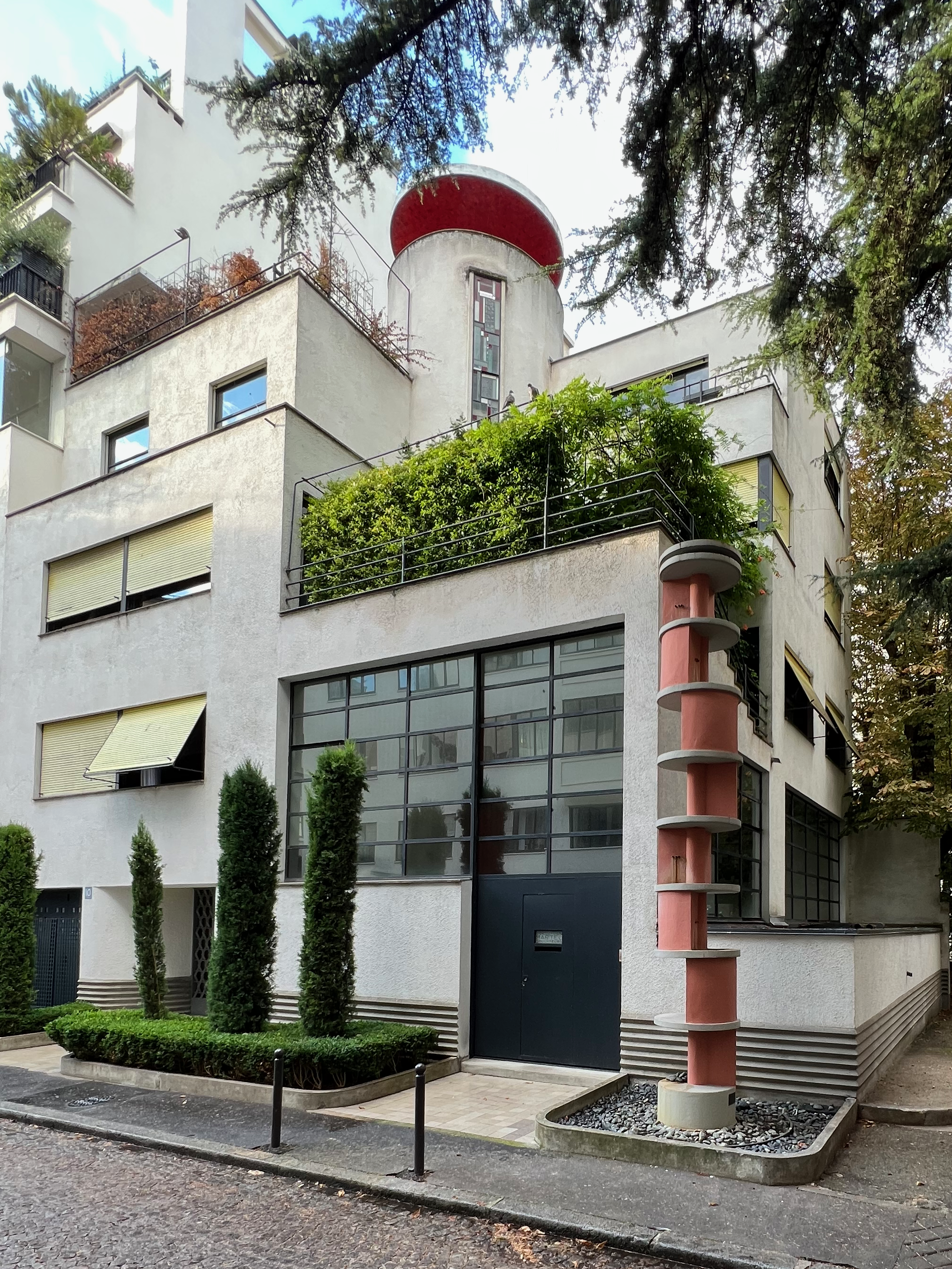
Eric Touchaleaume is known for his expertise in 20th century design and architecture. He is the founder and owner of the Galerie 54 in Paris, which specializes in the work of important 20th century designers and architects such as Le Corbusier, Charlotte Perriand, and Jean Prouvé.
Touchaleaume began his career as a dealer in the 1980s and quickly established himself as a leading expert in the field of modern design. He has curated numerous exhibitions and published several books on the subject, including a book on the work of Jean Prouvé that was published in 2007.
In addition to his work as a gallerist, Touchaleaume is also an avid collector of modern design and architecture. He has assembled an extensive collection of furniture, lighting, and other objects from the 20th century, and has been recognized for his role in preserving and promoting the legacy of modern design.
Today, Eric Touchaleaume is widely regarded as one of the most important dealers in the field of 20th century design, and his Galerie 54 is considered to be one of the premier destinations for collectors and enthusiasts of modern design and architecture.
La Cour Jardin at the Plaza Athénée in Paris is a beautiful and highly-regarded spot for dinner, offering an exceptional outdoor dining experience, surrounded by the beautiful greenery of the hotel’s courtyard. The peaceful and elegant atmosphere provides a perfect escape from the hustle and bustle of the city, making it an ideal spot to relax and enjoy a leisurely dinner.
Food is exceptional, featuring classic French cuisine prepared with the highest quality ingredients. The dishes are beautifully presented and full of flavor, showcasing the skills of the talented kitchen team.
The service is impeccable, with attentive and knowledgeable staff who are dedicated to providing a memorable dining experience.
Finally, the ambiance of La Cour Jardin is truly special, with the beautiful greenery and elegant setting creating a serene and romantic atmosphere.

Day 3

The Petit Palais is a museum and art gallery located in the 8th arrondissement of Paris, France. The building was designed by the French architect Charles Girault and was completed in 1900 for the Universal Exhibition, which was held in Paris that year.
The Petit Palais is notable for its Beaux-Arts architecture, which features a grand façade with a series of ornate columns, arches, and sculptures. The building also features a central courtyard with a garden and fountain, which provides a peaceful oasis in the heart of the city.
The museum’s permanent collection includes a wide range of art from the ancient world to the early 20th century. Highlights of the collection include works by artists such as Rembrandt, Rubens, and Monet, as well as a collection of decorative arts and objects from the Middle Ages and Renaissance.
In addition to its permanent collection, the Petit Palais also hosts a number of temporary exhibitions throughout the year. These exhibitions cover a wide range of subjects and feature works from both established and emerging artists.
The staircase of the Petit Palais is one of the most impressive features of the museum’s architecture. Designed by the French artist and sculptor Henri-Paul Nénot, the staircase is a masterpiece of Beaux-Arts style.
The staircase is located in the center of the museum and is characterized by its sweeping curves and ornate decoration. The steps are made of marble, while the balustrade is made of bronze and features intricate details, including cherubs, flowers, and other decorative motifs.
At the top of the staircase, visitors are greeted by a stunning glass roof that allows natural light to flood the space. The glass roof is supported by a series of ornate metal arches, which add to the staircase’s grandeur and sense of drama.
Overall, the staircase of the Petit Palais is considered to be one of the finest examples of Beaux-Arts style in Paris, and it provides visitors with a breathtaking introduction to the museum’s collection of art and artifacts.
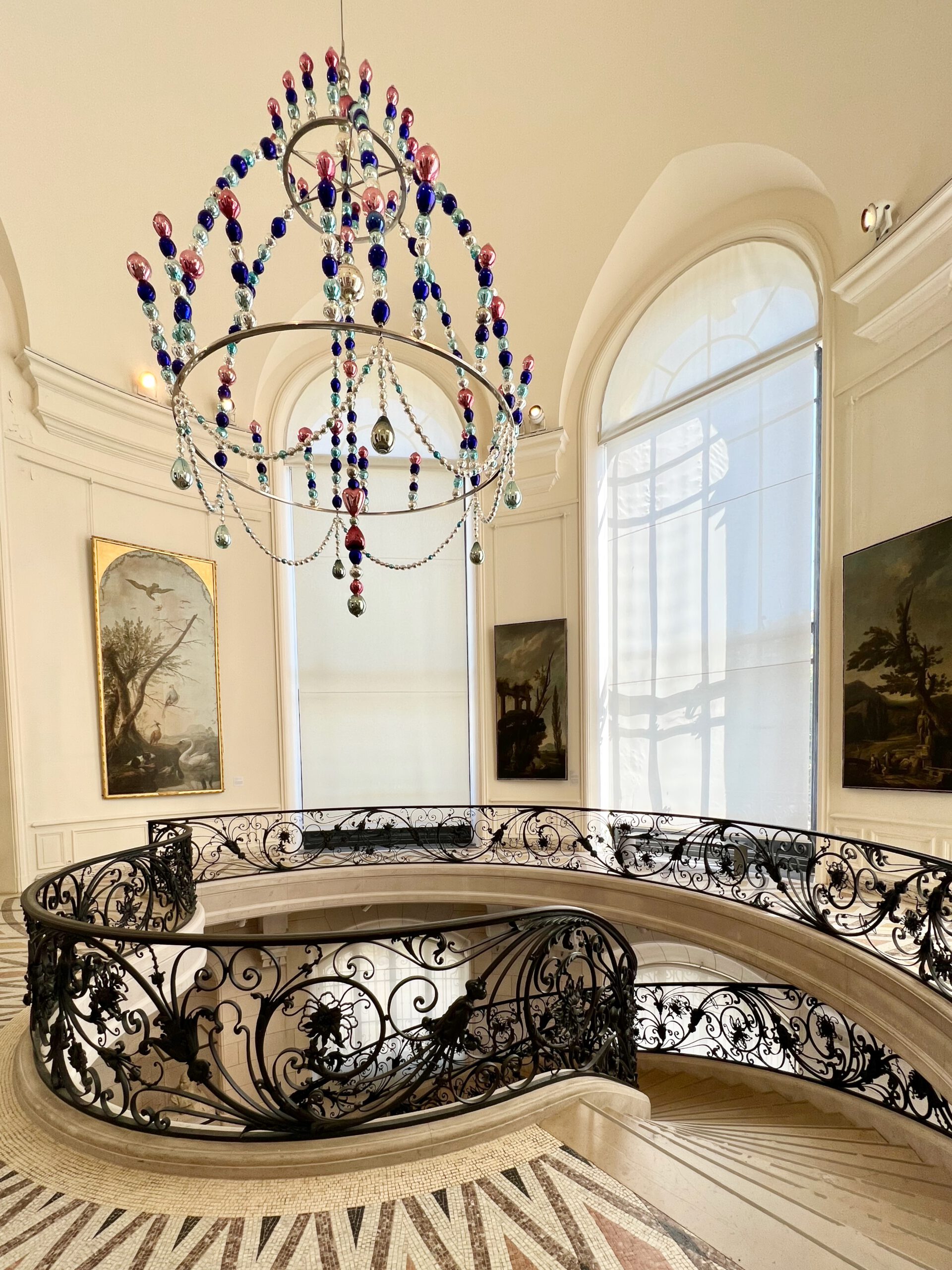

The museum also features a restaurant, called Le Jardin du Petit Palais, which is located in the central courtyard of the building. The restaurant offers a range of French cuisine, including seasonal dishes and a selection of wines.
The central courtyard of the Petit Palais is a beautiful and tranquil space that provides a peaceful retreat from the hustle and bustle of the city. The courtyard is located at the heart of the museum, and it is surrounded by a covered gallery that features a series of arches and columns.
At the center of the courtyard is a circular pool, which is lined with tiles and surrounded by a low wall. The pool is home to a number of water lilies and other aquatic plants, which add to the courtyard’s sense of tranquility.
The courtyard is also home to a number of sculptures, including a bronze statue of the Greek god Apollo that stands at the edge of the pool. Other sculptures include a statue of the French painter Jean-Auguste-Dominique Ingres and a group of allegorical figures that represent the arts.
The courtyard is open to the sky, and it is surrounded by a variety of trees and plants, including palm trees, cypress trees, and flowering shrubs. The combination of natural beauty and classical architecture creates a serene and timeless atmosphere that is truly unique to the Petit Palais.
The Golden Triangle of Paris is a prestigious shopping district located in the 8th arrondissement, bounded by the Avenue des Champs-Élysées, Avenue Montaigne, and Rue George V. It is named for the triangle shape formed by these three streets, which are known for their high-end boutiques, luxury fashion houses, and gourmet restaurants.
The Golden Triangle has a long history as a center of luxury and fashion, dating back to the 19th century when it was home to some of the most famous couture houses in Paris. Today, the district remains a popular destination for fashionistas and tourists seeking the latest designer fashions and accessories.
In addition to its fashion boutiques, the Golden Triangle is also known for its art galleries, museums, and cultural institutions. The famous Petit Palais, a museum of fine arts, is located nearby, as is the Palais de la Découverte, a science museum.
The area is also home to several five-star hotels, including the Plaza Athénée and the Hotel George V, as well as a number of Michelin-starred restaurants. Visitors to the Golden Triangle can enjoy a day of shopping, dining, and cultural exploration in one of the most fashionable and exclusive districts of Paris.
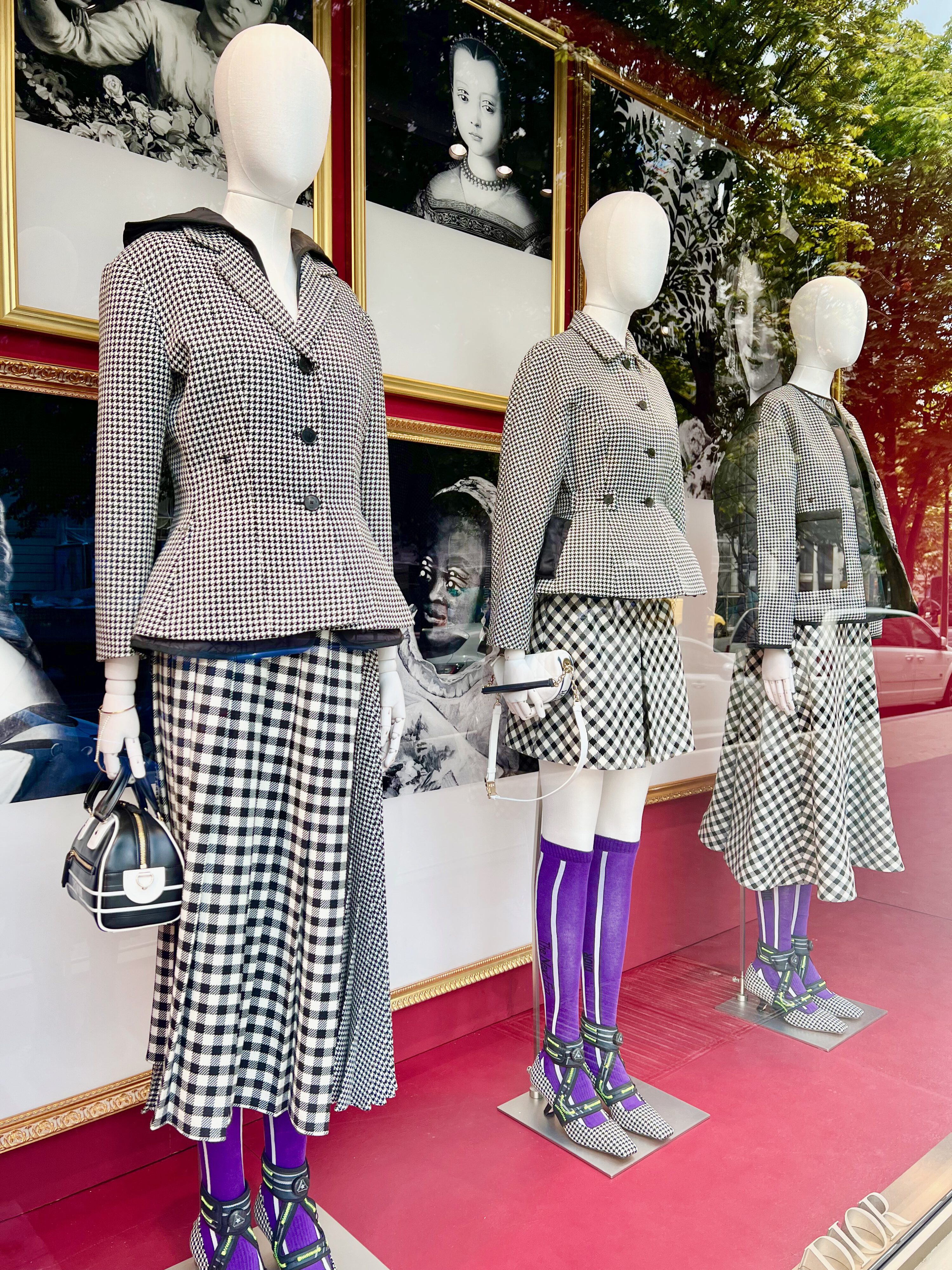
Day 4

The Samaritaine is a historic department store in Paris, located near the Pont Neuf on the Right Bank of the Seine River. The store was originally founded in 1869 by Ernest Cognacq and his wife Marie-Louise Jaÿ, and quickly became one of the most famous and prestigious shopping destinations in the city.
The original building, designed by architect Frantz Jourdain, featured an Art Nouveau facade with elaborate wrought-iron details and a glass roof, and was considered a masterpiece of Parisian architecture. Over the years, the store expanded to include additional buildings and structures, including a large Art Deco building designed by Henri Sauvage in 1928.
In 2005, the store was closed due to safety concerns, and remained shuttered for over a decade as it underwent a major renovation and restoration project. The project, which was led by the LVMH group, involved the renovation of the historic Art Nouveau and Art Deco buildings, as well as the construction of a new, contemporary building designed by Japanese architects SANAA.
The renovation project, which cost over 750 million euros, was completed in 2021, and the store reopened to the public after a 16-year closure. The new Samaritaine features a mix of luxury brands, designer boutiques, and artisanal shops, as well as restaurants, a hotel, and a cultural center. The historic Art Nouveau and Art Deco elements of the building have been carefully preserved and restored, while the new SANAA-designed building provides a striking contrast with its sleek, minimalist design. Overall, the renovated Samaritaine is a stunning example of modern architecture and historic preservation, and is a must-see destination for anyone visiting Paris.
The shopping experience at the newly renovated Samaritaine is one of luxury and sophistication, with a mix of high-end designer brands and artisanal shops that showcase the best of French craftsmanship and style.
The store is organized into several departments, each with its own unique style and atmosphere. The beauty department, for example, features a range of luxury cosmetics and skincare brands, while the fashion department showcases the latest collections from top designers like Dior, Louis Vuitton, and Givenchy. There are also departments dedicated to home goods, accessories, and food and wine.
One of the highlights of the shopping experience at Samaritaine is the store’s commitment to sustainability and ethical sourcing. Many of the products sold at the store are made using sustainable materials or production methods, and the store has a strong focus on promoting local and French-made products.
In addition to its retail offerings, Samaritaine also features several restaurants and cafes, including a rooftop terrace with stunning views of the Seine River and the surrounding cityscape. There is also a cultural center within the store that hosts exhibitions, events, and performances throughout the year.

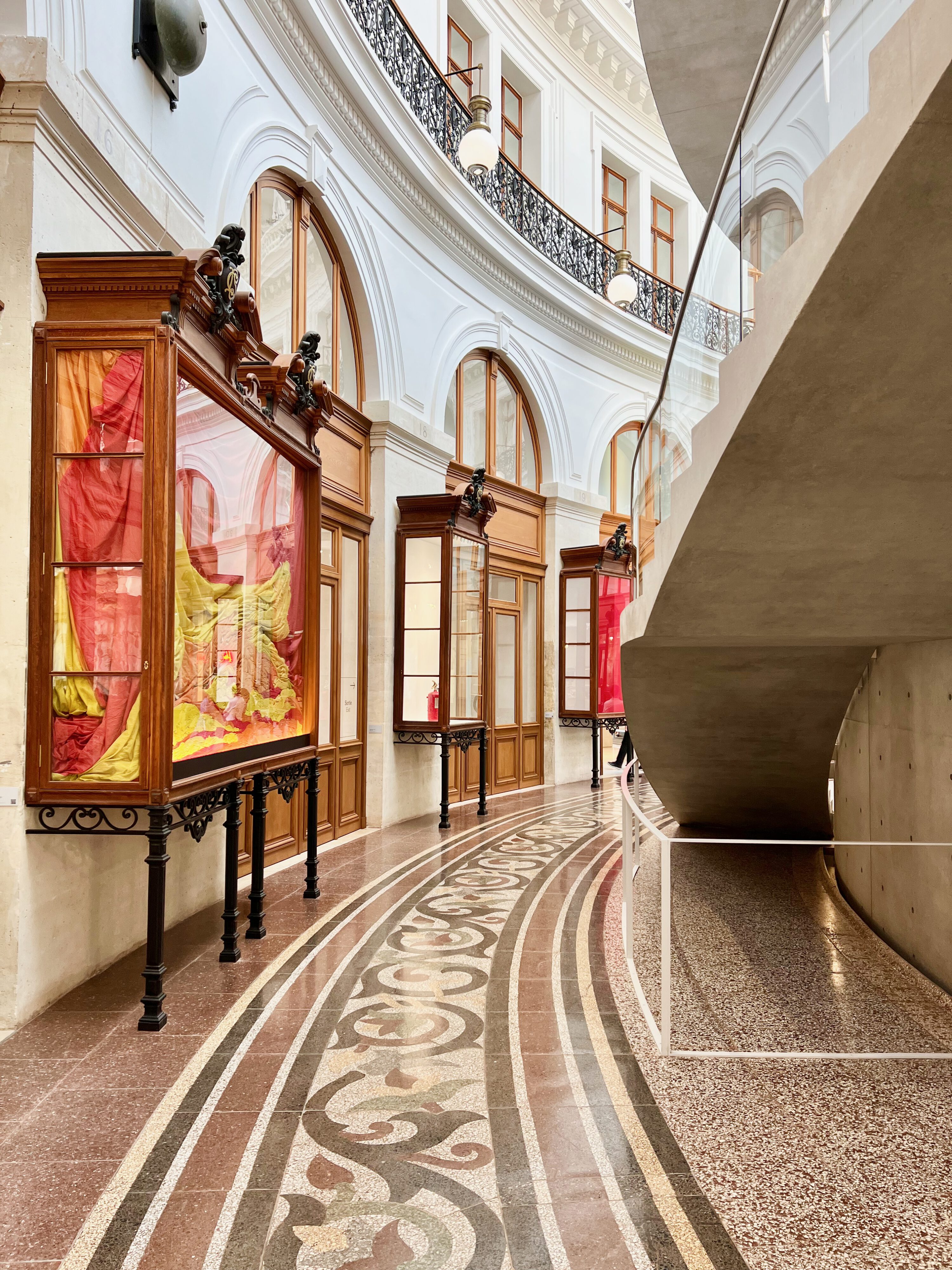
The Pinault Collection is a private contemporary art collection belonging to French billionaire François Pinault. The collection features works by some of the world’s most renowned contemporary artists, including Jeff Koons, Damien Hirst, and Cindy Sherman, among many others.
In 2016, Pinault announced plans to open a new museum in Paris to showcase his collection. He acquired the Bourse de Commerce building, a historic circular stock exchange building in the heart of the city, and commissioned renowned Japanese architect Tadao Ando to lead the renovation and transformation of the space into a museum.
The renovation of the Bourse de Commerce was a major undertaking, involving the restoration of the building’s historic architecture and the creation of new exhibition spaces and facilities. Ando’s design for the museum includes a large central rotunda, which serves as the main exhibition space, as well as several smaller galleries and a rooftop terrace with stunning views of the surrounding city.
The museum officially opened to the public in May 2021, and has quickly become one of the city’s most popular cultural destinations. The inaugural exhibition, titled „Ouverture,“ features a range of contemporary artworks from the Pinault Collection, as well as a number of new commissions and site-specific installations created specifically for the Bourse de Commerce.
Overall, the Pinault Collection at the Bourse de Commerce is a stunning example of contemporary art and historic preservation, showcasing some of the world’s most exciting and innovative artworks in a beautiful and historic setting.
Tadao Ando is a renowned Japanese architect known for his minimalistic and innovative designs that incorporate elements of traditional Japanese architecture with modernist principles. Here are some key points about his work:
Use of Concrete: Ando is famous for his use of concrete as a primary building material. He uses it to create clean lines, smooth surfaces, and bold forms that are both simple and elegant.
Natural Light: Ando’s buildings are designed to make the most of natural light, with carefully placed windows and skylights that create a play of light and shadow throughout the day.
Water and Nature: Water and nature play a significant role in Ando’s work, with many of his buildings incorporating water features such as reflecting pools and fountains. He also uses natural materials such as wood and stone to create a connection between his buildings and the surrounding environment.
Spatial Relationships: Ando’s buildings are carefully designed to create a sense of balance and harmony, with a focus on spatial relationships and the way that people move through and experience the space.
Some of Ando’s most famous works include the Church of the Light in Osaka, the Naoshima Contemporary Art Museum, and the Pulitzer Arts Foundation in St. Louis, Missouri. He has received numerous awards and honors for his work, including the Pritzker Architecture Prize in 1995, which is considered the highest honor in the field of architecture.

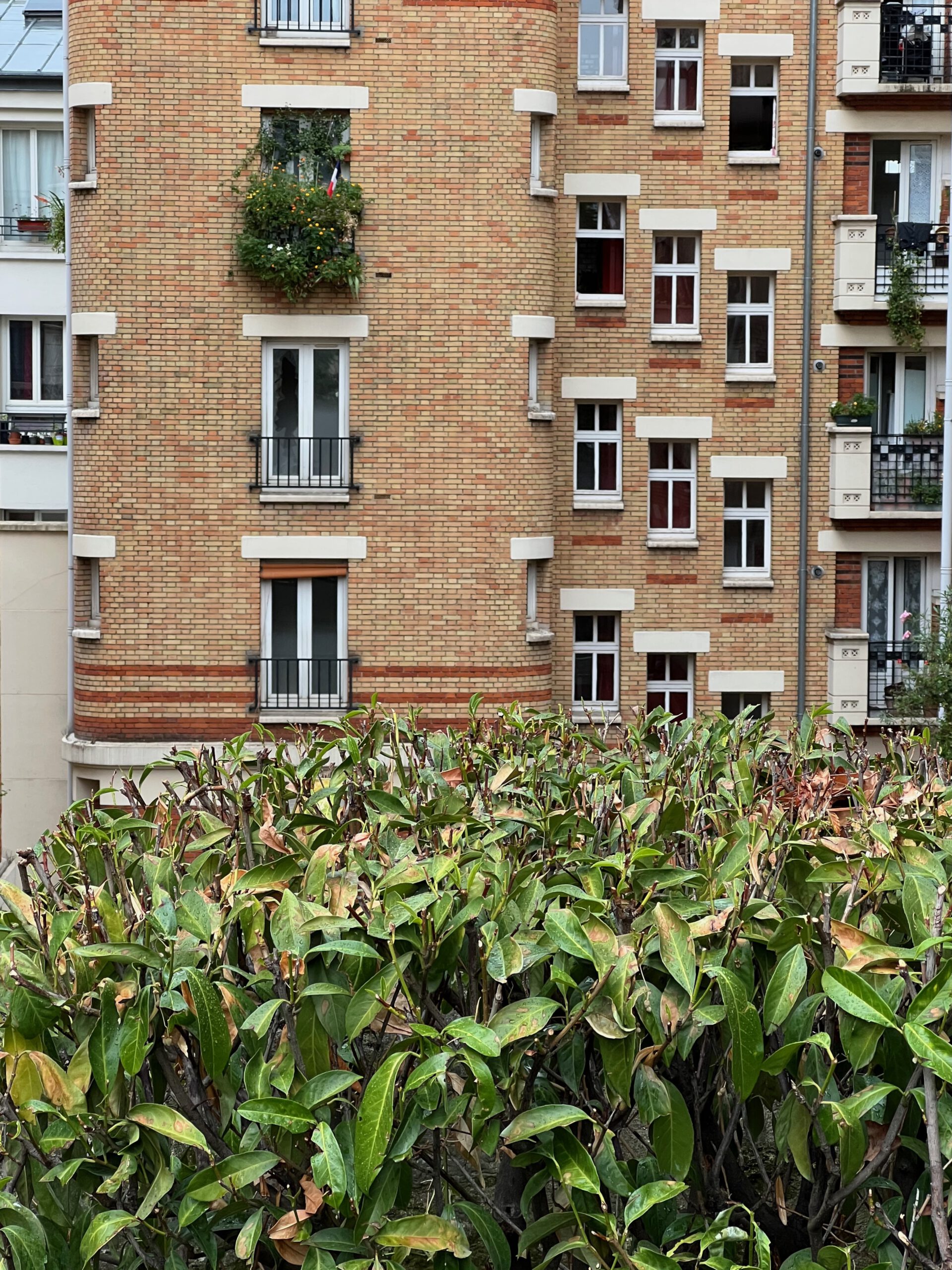
The Coulée Verte René-Dumont, also known as the Promenade Plantée, is a unique park located in the 12th arrondissement of Paris. The park stretches for nearly three miles along an elevated former railway line that runs from the Bastille area to the Bois de Vincennes.
The park was designed by architects Philippe Mathieux and Jacques Vergely, and was inspired by the High Line park in New York City. It features a mix of landscaped gardens, natural areas, and urban design elements, including fountains, sculptures, and public art installations.
One of the highlights of the park is its elevated walkway, which offers stunning views of the surrounding city and provides a peaceful and secluded space for walking, jogging, or simply relaxing. The park is also home to a variety of wildlife, including birds, butterflies, and bees, as well as a number of native plant species.
The park is named after René Dumont, a French agronomist and environmentalist who was a pioneer in the field of sustainable agriculture. His work focused on promoting organic farming and sustainable food production, and he was a strong advocate for environmental conservation and social justice.
The Passage du Chantier is a covered pedestrian arcade located in the 12th arrondissement of Paris, near the Bastille area. It was built in the mid-19th century and was once a bustling hub of activity for the city’s construction and building trades.
Today, the Passage du Chantier has been renovated and transformed into a charming and unique shopping destination. The arcade is home to a mix of artisanal boutiques, designer shops, and gourmet food vendors, offering a wide range of high-quality goods and products.
One of the highlights of the Passage du Chantier is its beautiful glass roof, which allows natural light to flood into the space and creates a bright and airy atmosphere. The arcade is also decorated with colorful mosaics and intricate ironwork, adding to its charm and character.
Visitors to the Passage du Chantier can browse the various shops and boutiques, sample gourmet food and drink, or simply enjoy the unique atmosphere of this historic and beautiful arcade. It’s a hidden gem of Paris that’s well worth a visit for anyone interested in shopping, design, or architecture.
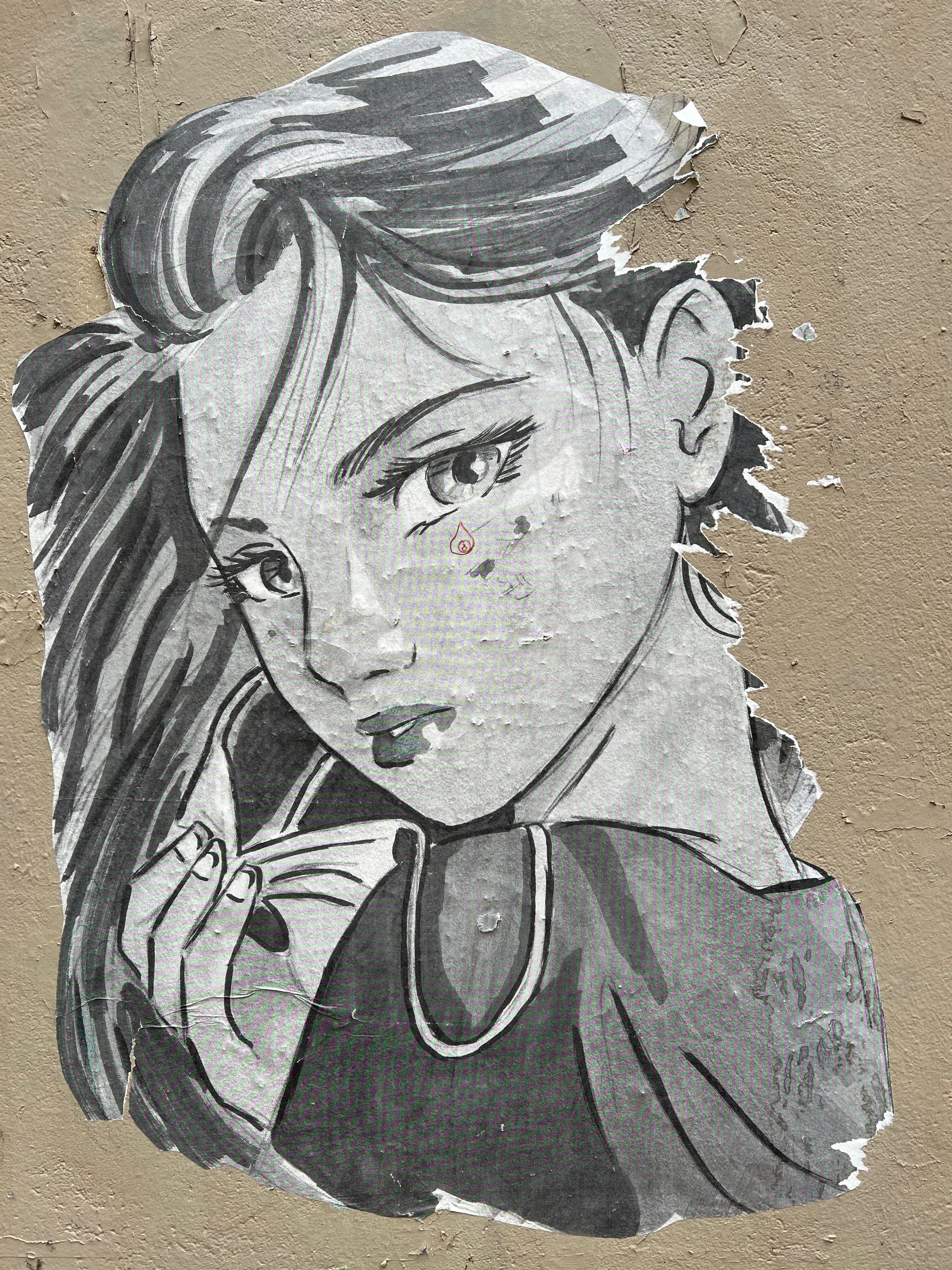
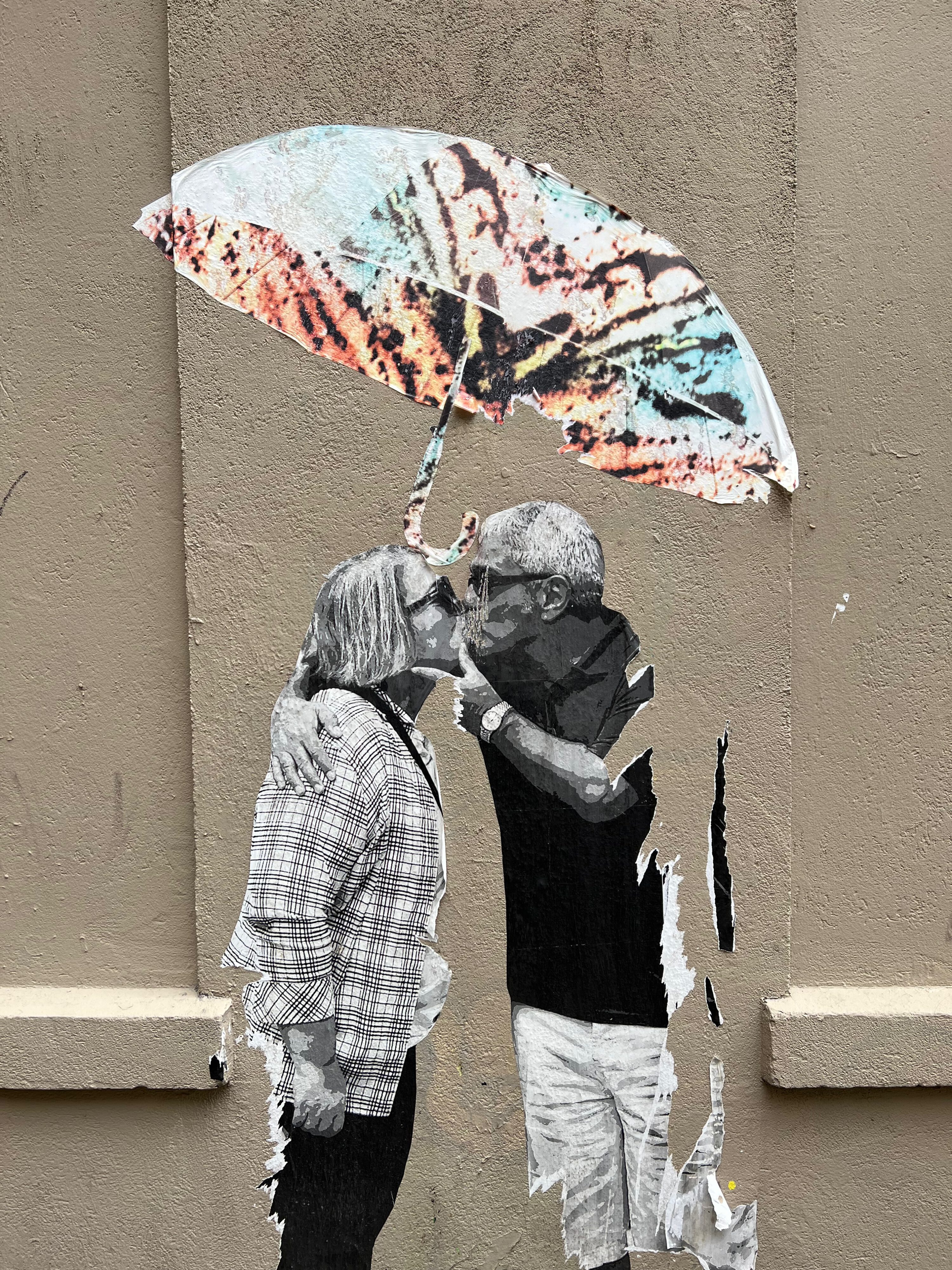
The Bastille quarter in Paris is also known for its vibrant street art scene, with a number of murals and graffiti works adorning the walls and buildings throughout the neighborhood. Many of the works are created by local and international artists, and reflect a diverse range of styles and themes and some of them can be found in the Passage du Chantier.
One of the most famous pieces of street art in the Bastille area is a mural by the French artist Blek le Rat, which depicts a large, stenciled image of a rat. The work has become an iconic symbol of the Parisian street art scene, and has inspired countless other artists around the world.
Other notable works in the Bastille quarter include colorful murals by the street artist Jef Aerosol, as well as pieces by Invader, C215, and many others. The neighborhood is also home to a number of art galleries and studios, showcasing the work of both established and emerging artists.
